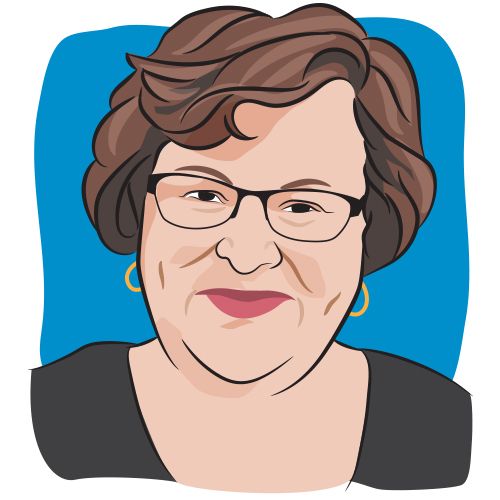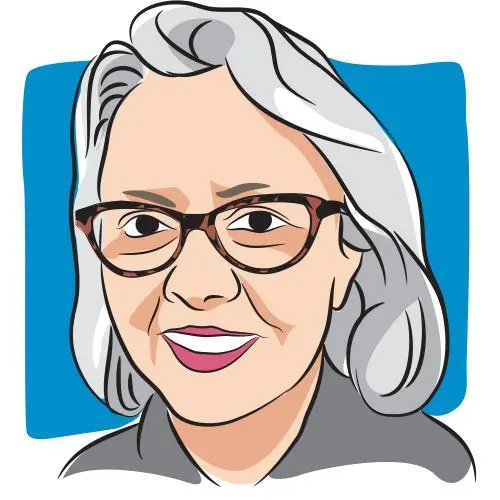Article
Expert Discusses Exploring Alternative Treatments for Large Cell Lymphoma
Author(s):
Patients with activated B-cell-like lymphoma may not respond to standard treatment, so new options are being explored.
Patients with large cell lymphomas who fall under the activated B-cell-like (ABC) subtype are not very likely to respond well to R-CHOP, the standard approach of care.
Alternative treatments for these patients are being investigated, such as the regimen of Rituxan (rituximab), Etopophos (etoposide phosphate), prednisone, Oncovin (vincristine sulfate), cyclophosphamide and doxorubicin hydrochloride (R-EPOCH). Researchers are anticipating phase 3 results comparing R-EPOCH with R-CHOP, explains Loretta J. Nastoupil, M.D.
Combination regimens with R-CHOP are also being explored, including one with Revlmid (lenalidomide) (NCT02285062) and one with Imbruvica (ibrutinib), a BTK inhibitor that has shown promise in chronic lymphocytic leukemia (NCT01855750).
What are the essential updates in the management of aggressive lymphoma?
In an interview with CURE, Nastoupil, an assistant professor in the Department of Lymphoma/Myeloma at The University of Texas MD Anderson Cancer Center, discussed these ongoing clinical trials and how practitioners can better identify high- and poor-risk patients with large cell lymphomas.In terms of what is exciting or coming out in the next few months to one year in untreated large cell lymphomas, there are a number of randomized studies that are looking at building off of the backbone of R-CHOP. They are, essentially, introducing targeted agents or agents that we think might have higher efficacy in the historically considered poor-risk group, which is the ABC or non-germinal center large-cell lymphoma.
Going forward in the next five to 10 years in this space, what do you see on the horizon?
Historically, though somewhat controversial, we think that that might be a group that may not do as well with R-CHOP therapy. This is exciting and very promising that we might have alternative therapies that will enhance the efficacy. I briefly touched upon data looking at R-CHOP plus the addition of Revlmid and R-CHOP with the addition of Imbruvica. We think we are going to be promising options for patients of the non-germinal center subtype.That’s a great question. We have struggled over the past 10 years to really improve upon R-CHOP. We still consider that to be the standard of care for the majority of patients.
We are doing a little bit better of a job in terms of identifying high-risk patients who we fear will do poorly with R-CHOP. What we have not clearly established is what the preferred alternative is for those patients. In my opinion, I still think those patients should be considered for clinical trials where they may have access to agents where we think hold promise, but we’re still awaiting the randomized study to see if there’s truly a better option than R-CHOP.
We are still struggling with the patients who are chemorefractory in terms of identifying alternative approaches that hold promise, but also will demonstrate improvement in survival. There are more promising options in the non-germinal subtype, based on the molecular profiling that’s been done, which demonstrates that there might be targeted agents that may be effective. What has been slightly disappointing is the duration of response may not be as adequate as we had hoped.
Can you expand on the ongoing studies that you're excited to see the results of?
What seems to be promising at this time is the CAR (chimeric antigen receptor) T-cell therapy, particularly for those who are chemorefractory, but it does come with associated toxicities. Identifying the proper patient, and providing therapy that we think will be effective in minimizing or doing a better job managing the toxicity, is still the goal.There will be a large randomized study that will be presented at this upcoming ASH Annual Meeting, which is a randomized trial of R-CHOP versus dose-adjusted EPOCH-R, which most recently has been touted as a possibility of overcoming R-CHOP. There will be a lot of interest in terms of whether there are various subgroups that might respond to one regimen versus the other. We have all been waiting a long time for the results, so the general consensus is that it’s probably going to be no different than R-CHOP.
That study will be coming out and could impact practice patterns. For instance, at our institution, we have a patient who is higher risk and we worry may not do well with R-CHOP. The default is leaning toward dose-adjusted EPOCH-R. This may shake things up a little bit if it truly is a negative study and shows that it is not a better option for those patients.
There are randomized studies coming out looking at R-CHOP plus drug X. Again, there’s R-CHOP plus Revlmid versus R-CHOP. There’s R-CHOP plus Imbruvica versus R-CHOP. Those studies are promising and we anticipate that they might be beneficial—particularly for the non-germinal center subtype.
In terms of the relapse setting, we are still moving forward with salvage chemotherapy, high-dose therapy, and autotransplant for those who respond to chemotherapy. However, there is a huge unmet need for patients who are chemorefractory.
How do you identify a patient who is at high risk?
Again, we are exploring targeted agents, but that’s an area of exploration that we’ve not had promising outcomes. CAR T-cell therapy seems to be the most promising at this point. There’s a select patient population that has access to the CAR T-cell studies, and for those who fail that therapy, there are very limited options that hold promise.That’s a great question. There are different ways to identify a patient who you think may do well or do poorly with our standard treatment. There is the International Prognostic Index (IPI) risk calculator that still puts patients into low, intermediate, or high risk. We have struggled for a long time to identify better options for the high-risk population. There are two subtypes: germinal center and ABC.
The most effective way to classify those patients is based on gene expression profiling, which is usually reserved for clinical trials. In the clinical setting, we are usually deferring to immunohistochemistry to classify them. Outside of a clinical trial, that doesn’t necessarily help us choose who might do better with something other than R-CHOP.
Right now, we probably have the most promise in identifying poor-risk patients in altering therapy are those who are double hit. They have a translocation in 14;18, so BCL-2 or BCL-6, or they might have Myc translocation or overexpression. Those are the patients we clearly know are not well suited for R-CHOP and should have an alternative therapy.
How would you describe the future in this space?
What should that alternative be? In retrospective studies, we’ve identified dose-adjusted EPOCH-R as our preferred approach to those patients, and there are still unanswered questions as to whether or not they should proceed with consolidation in the form of a transplant or another therapy once they achieve that first remission.Right now, it is a very exciting time in diffuse large B-cell lymphoma because we have a number of randomized studies that are either finishing up or still enrolling. In terms of access to novel therapies, it would be a good time to consider referral to a trial because, oftentimes, community physicians believe that frontline large cell lymphoma is not the most appropriate time to refer someone for a clinical trial.
There are a number of options out there that may be better than the standard of care, so worthy of consideration. Again, for those who are refractory or failing salvage therapy, we clearly know that those outcomes are quite poor and those patients absolutely should be referred for consideration of a trial.




